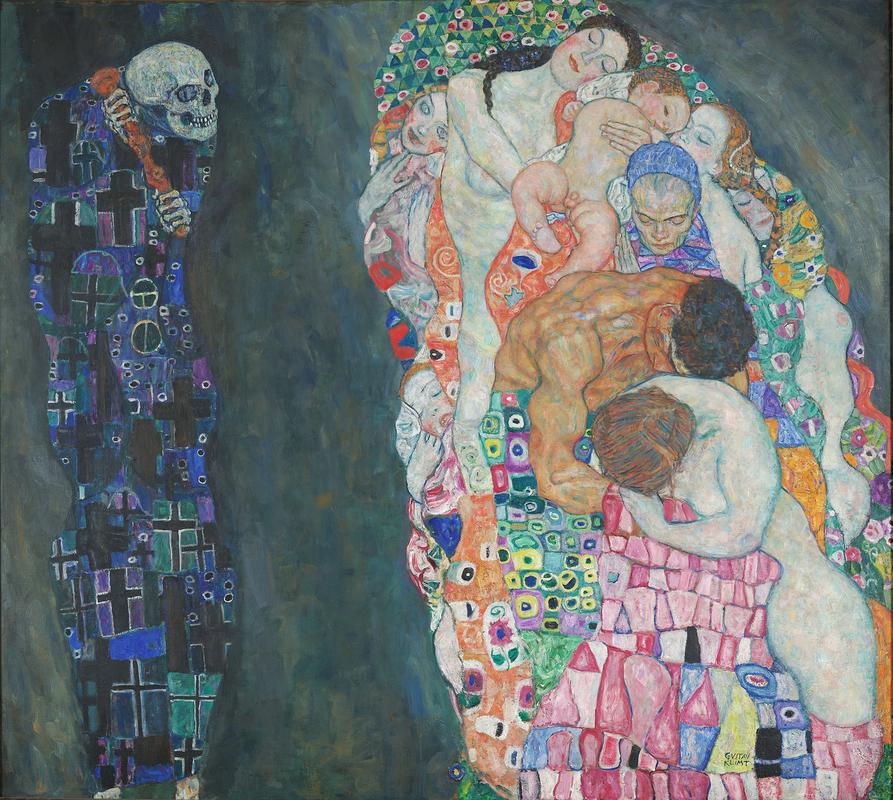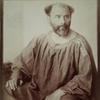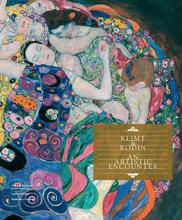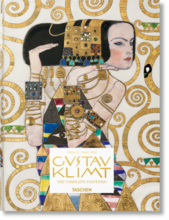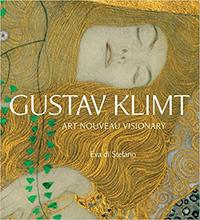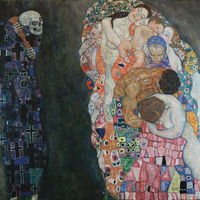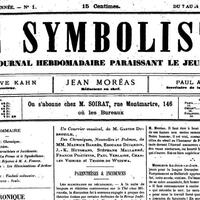More about Death and Life
- All
- Info
- Shop

Contributor
Death and Life by Gustav Klimt depicts a pretty straightforward message about the roles of both in the world.
If the title alone doesn’t make the subject matter clear enough for you, then there’s the figure on the left that is donning a skull for a head and is dressed in a dark, cross-covered cloak. He is also holding a club that he is gripping tightly as if he were really, really excited to use it. A bit too excited if you ask me. He gives me the heebie jeebies. This is Death (obviously) and the brightly-colored group of people that he wants to use his club on is, you guessed it, Life.
The Life side is a tight bunch…literally because they are all piled into one big blob. There are people of all ages, from infancy to senescence, representing mankind. Almost everyone in this group is closing their eyes, which is an illusion to the dream state or subconscious. This was right around the time that Freud was doing his dream theory thing so that might explain Klimt's interest in our sleep-time hallucinations. The two people who aren’t closing their eyes are the baby, and the really freaky-looking girl on the top left of the group who I identify with strongly. They are supposed to represent naivety and curiosity about Death. This painting was loosely based on the Medieval theme of the dance of Death, an archetype in which a Grim Reaper character takes people of all statuses.
Klimt claimed this piece as his most important figurative work and it was aptly awarded first prize at the 1911 International Art Exhibition in Rome. Klimt was stoked on the painting until about 1915 when he went back and changed the color of the background from gold to greenish bluish grey. You know how artists can be. Always fixing things that ain’t baroque.
Sources
- "Death And Life - Gustav Klimt - Google Arts & Culture." Google Cultural Institute. Web. 2 Nov. 2018. https://artsandculture.google.com/asset/death-and-life/YgFW0Kwjd_ptXQ
- "Gustav Klimt, Death And Life | Masterpieces Of The Collection | The Leopold Collection | Leopold Museum." Leopoldmuseum.org. Web. 2 Nov. 2018. https://www.leopoldmuseum.org/en/leopoldcollection/masterpieces/41
- GUSTAV KLIMT - DEATH AND LIFE. One Minute Art, 2014. Video. https://www.youtube.com/user/oneminart/about
- Zucker, Steven, and Beth Harris. Klimt, Death And Life. Khan Academy. Video. https://www.khanacademy.org/humanities/becoming-modern/symbolism/v/gust…
Featured Content
Here is what Wikipedia says about Death and Life
Death and Life (German: Tod und Leben, Italian: Morte e Vita) is an oil-on-canvas painting by Austrian painter Gustav Klimt. The painting was started in 1908 and completed in 1915. It depicts an allegorical subject in an Art Nouveau (Modern) style. The painting measures 178 by 198 centimeters and is now housed at the Leopold Museum in Vienna.
Check out the full Wikipedia article about Death and Life

